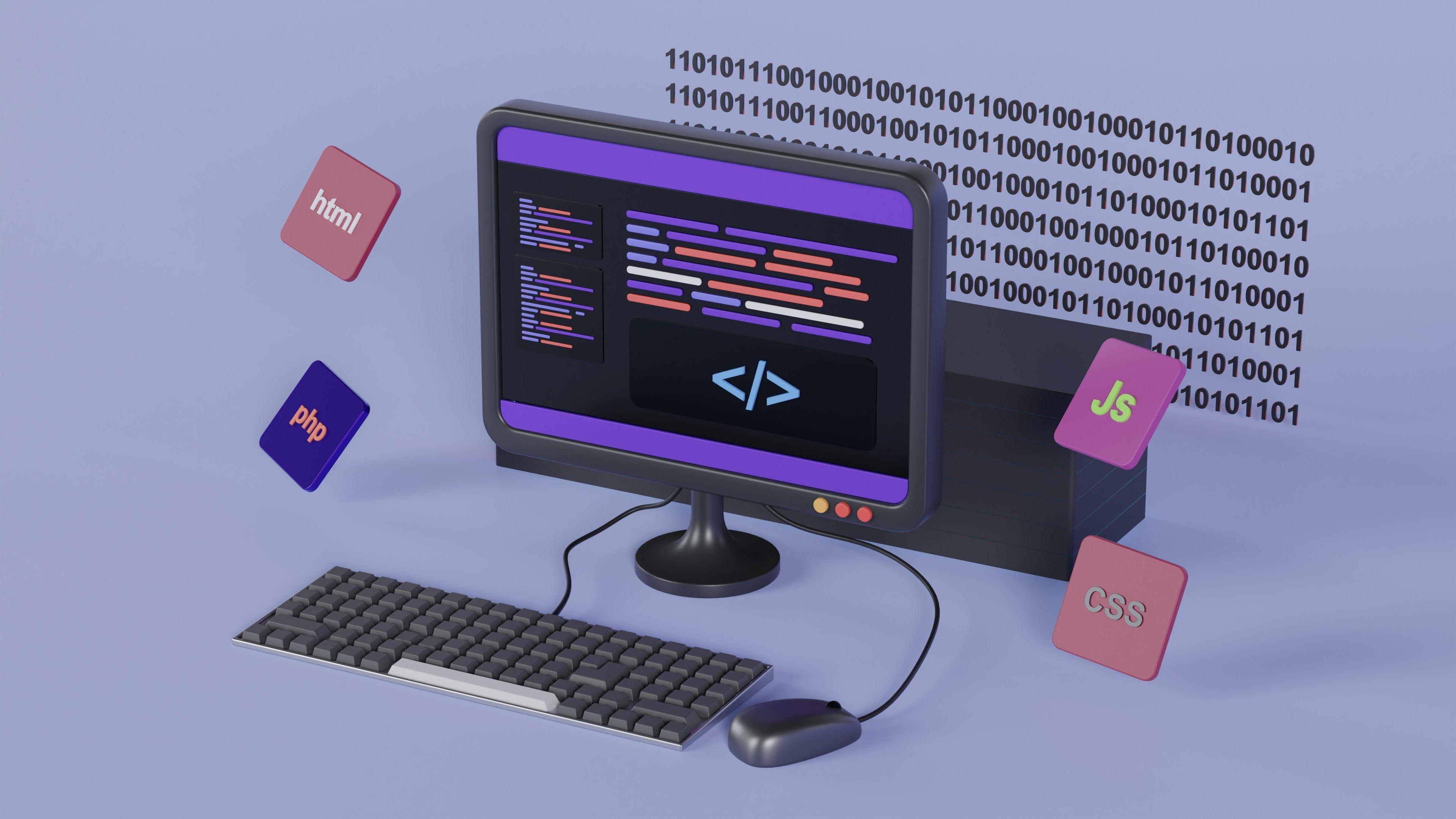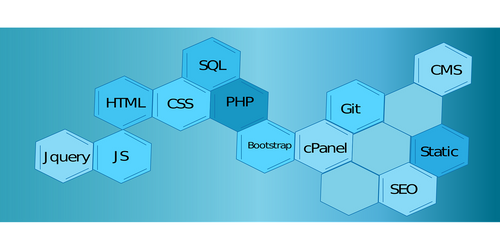Introduction
In today's technology-driven world, the choice of a programming language plays a crucial role in shaping the success of business organizations. The choice of a programming language can significantly impact the overall outcome of a project. If you wonder which programming languages are the most in demand, the most versatile and which are easy to learn? In this article, I will explore some of the most popular programming languages that have widespread recognition among software developers and product owners.
The Importance of Programming Languages in Today's Business Landscape
As technology continues to advance and digital transformation becomes a necessity, businesses of all sizes rely heavily on programming languages for software, applications and web development, processes automation, and overall efficiency improvement. The choice of the programming language for your project is the key to success of a custom software development project. Here are several reasons why a proper choice of the language is a fundamental factor for the success of an IT project in any enterprise.
Robust Software Development
Programming languages are fundamental tools for creating software applications that businesses utilize for various purposes. From web and mobile apps to enterprise software and custom solutions, programming languages enable businesses to build the digital products and services they need to operate effectively.
Web Development and E-commerce
With the rise of e-commerce and online presence, businesses take advantage of web development technologies and programming languages such as HTML, CSS and JavaScript. These languages enable the creation of dynamic and interactive websites, online stores, and web-based applications, allowing enterprises to reach wider audiences and conduct transactions online.
Integration and Interoperability
In interconnected business landscape, integrating different software systems and ensuring interoperability is crucial. Programming languages provide the means to develop application programming interfaces (APIs) and build integrations between various software components, allowing businesses to connect different systems and share data seamlessly.
Automation and Efficiency
Innovative technologies allow businesses to automate repetitive tasks, streamline processes, and improve overall efficiency. Through scripting and automation, companies can reduce manual effort, eliminate human error, and achieve faster and more accurate results, leading to increased productivity and cost savings.
Data Analysis and Business Intelligence
Python and SQL are widely used for data analysis, statistical modeling, and business intelligence. These languages enable businesses to extract insights from large datasets, perform complex calculations, and make decisions based on accurate data analysis. With the increasing importance of data in business strategy, programming languages are essential for making use of their potential.
Artificial Intelligence and Machine Learning
Artificial intelligence (AI) and machine learning (ML) solutions revolutionize the way businesses operate as well as allow them to build systems and applications their clients enjoy using. Languages like Python, TensorFlow, and PyTorch provide the necessary tools and frameworks for building intelligent systems, predictive models, and automated decision-making algorithms, which have numerous applications in areas such as customer service, recommendation systems, fraud detection, and more.
Rapid Prototyping and Innovation
Some programming languages offer businesses the ability to rapidly prototype and test ideas, facilitating innovation and quick iteration. By leveraging languages and frameworks that support rapid development, businesses can bring new products and features to the market faster, stay ahead of the competition, and adapt to changing customer demands.
Scalability and Flexibility
Programming language plays a crucial role in creating scalable and flexible software architectures. Languages like Java, C++, and C# are known for their ability to handle complex systems and support large-scale enterprise applications. These languages provide the foundation for building robust and scalable software that can adapt and grow with the business.
Factors to Consider When Choosing a Programming Language
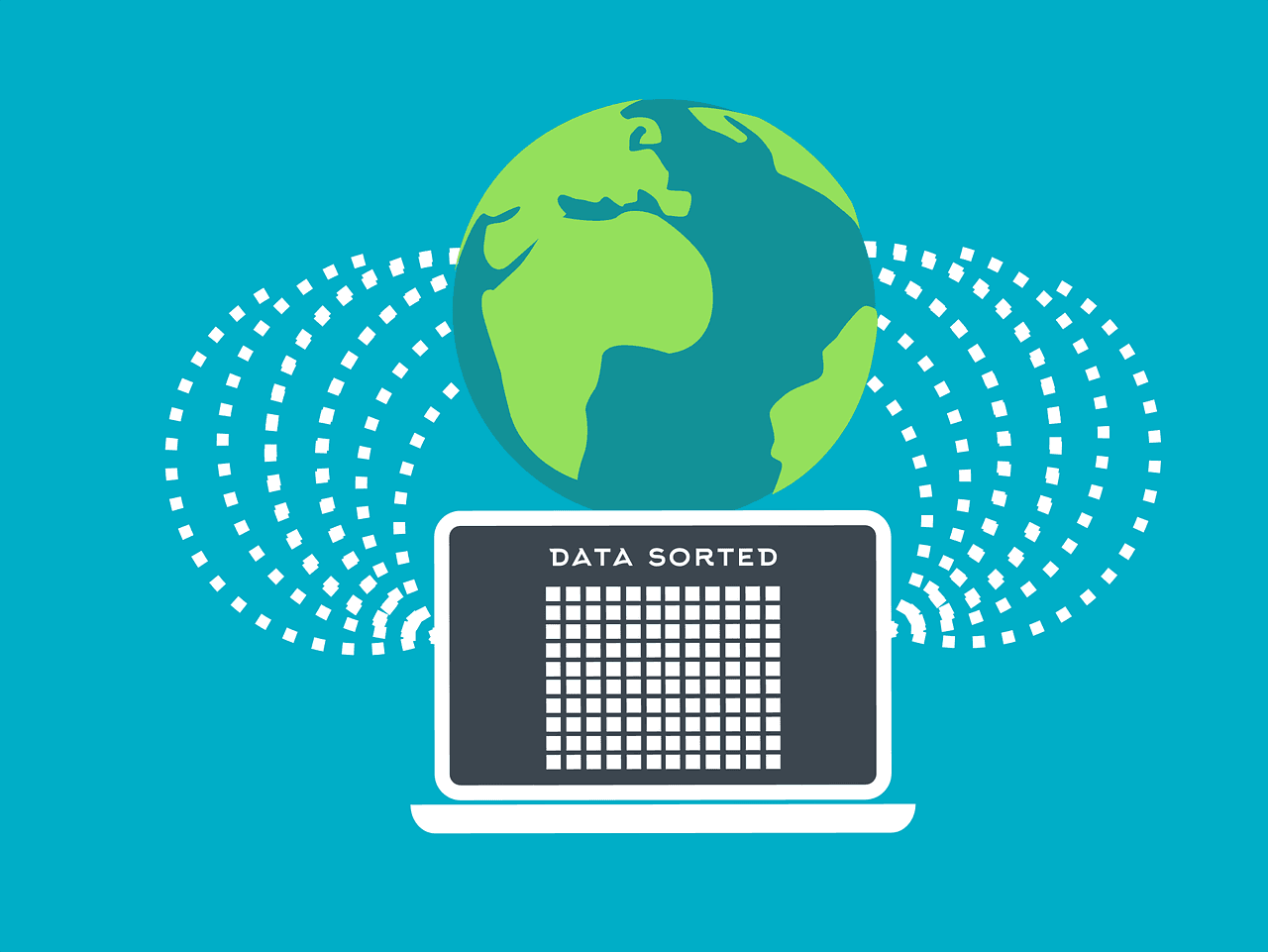
Selection of a programming language for a software development project is fundamental matter as improper choice of it can cast a shadow on the future functioning and further development. The choice of programming language should align with the project's requirements, team skills, and long-term goals. It is often beneficial to consider multiple factors and strike a balance that best suits your specific needs. Here are several matters you should consider:
Purpose and project requirements
First set the goal of your project and outline its specific requirements. Different programming languages excel in different domains. For example, if you are building a web application JavaScript, Python, or Ruby will be suitable. If you are developing a mobile app, languages like Swift (iOS) or Kotlin (Android) might be the most appropriate.
Performance requirements
Evaluate the functional demands for your software. Some programming languages, like C or C++, are known for their low-level control and efficiency, making them suitable for performance-critical applications. Other languages, like Python or Ruby, prioritize developer productivity over raw performance.
Future growth
Languages with a large user base and ongoing development are more likely to stay relevant and receive updates. This is an essential factor if you consider the future development of your application or software. Make sure that the programming language you choose is widely used and actively maintained so that it will support your project as it grows. Moreover, make sure that the code in your software is clean and in line with coding standards so that it can be easily reworked and extended by any software developer.
Integration and compatibility
Check if the programming language integrates well with other technologies or systems you plan to use. For example, if you work with databases, make sure the language has good support for your preferred database system. Consider compatibility with existing codebases or libraries you rely on in everyday work.
Availability of libraries and frameworks
Assess the availability of libraries and frameworks that can help speed up development. The availability of a robust ecosystem can greatly impact your productivity. Check if the language has matured frameworks and libraries for common tasks, such as web development, machine learning, or data analysis. These features will help you streamline processes, allow you to collect data you need and help you make decisions based on accurate information.
Personal preference
Personal preference can also play a major role in the choice of the programming language for an IT project. If you or a software development team in your company have experience or a strong preference for a particular language, it might be a primary choice. It can positively impact your motivation and enjoyment during the development process.
Community support
The strength of online communities and ecosystem connected with a particular programming language can greatly impact your software development process. An established and active support network will help you overcome challenges and find solutions quickly. It also indicates the likelihood of finding experienced developers to hire. Additionally, consider the availability of documentation, tutorials, forums, and online resources informing about language's potential.
Performance requirements
Evaluate the performance requirements of your project. Some programming languages, like C or C++, are known for their low-level control and efficiency, making them suitable for performance-critical applications. Other languages, like Python or Ruby, prioritize developer productivity over raw performance.
Long-term viability
Finally, evaluate factors such as language popularity, industry adoption, and the backing of large organizations. Every programming language is used in the dedicated framework, therefore, verify if it guarantees lasting performance.
How Does a Programming Language Become Popular?
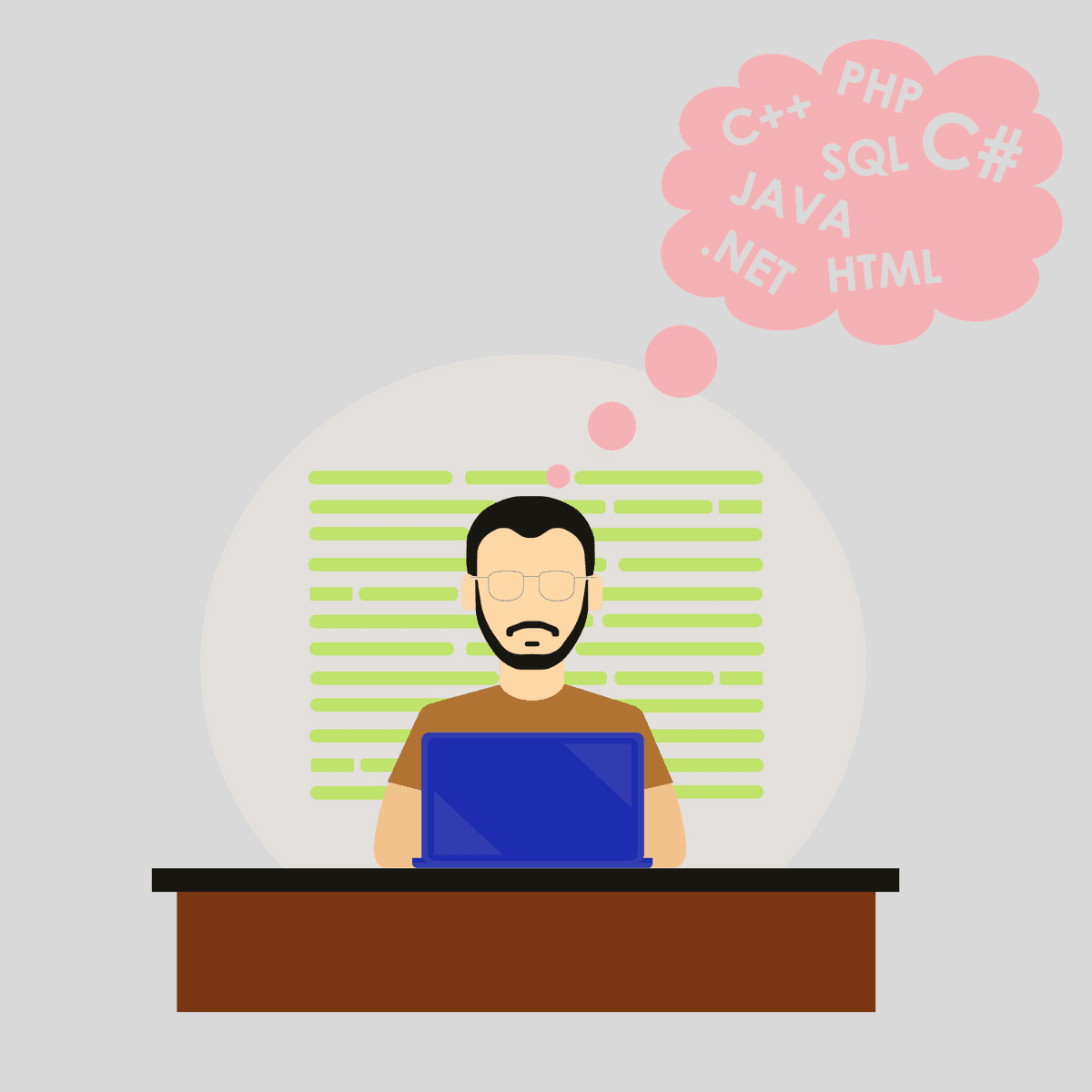
The popularity of a programming language is influenced by several factors. While there is no definitive formula for achieving popularity, here are some common factors that can contribute to the rise of a programming language:
Ease of use and simplicity
Programming languages that are easy to learn and use tend to attract more developers. If a language has a simple syntax and provides clear and concise ways to solve common programming tasks, it can gain popularity quickly. Beginner-friendly languages have seen significant growth due to their accessibility. Examples of such programming languages are Python, JavaScript, HTML/CSS and Ruby.
Special demands and trends
The demand for certain programming languages is often driven by industry trends and the needs of specific domains. Languages that are well-suited for popular technologies or emerging fields tend to gain traction. For high-performance needs, languages like C, C++, or Rust are often preferred due to their low-level control and efficient memory management. In web development, JavaScript is essential for client-side programming, while server-side frameworks like Node.js, Ruby on Rails, Django, or ASP.NET are popular choices. When it comes to data analysis and machine learning, Python and R have strong ecosystems of libraries and tools that make them go-to options.
Large community
A strong and supportive community can significantly contribute to the popularity of a programming language. When a language has an active community, developers can share knowledge, collaborate on projects, and contribute to the growth of libraries, frameworks, and tools. The availability of a rich ecosystem of resources can attract more developers and make the language more appealing.
Performance and efficiency
High-performance languages that can handle computationally intensive tasks efficiently often gain popularity in fields such as scientific computing, game development, or systems programming. Languages like C++, Rust, or Go have gained popularity due to their emphasis on performance and efficiency.
Backed by influential organizations
The support of influential organizations can boost the popularity of a programming language. If a language is backed by a well-known company or institution, it tends to gain credibility and attract more developers. For example, the support of Google has significantly contributed to the popularity of the Go programming language.
Platform compatibility
Languages that can run on multiple platforms and support cross-platform development often gain popularity. Compatibility with popular operating systems, such as Windows, macOS, and Linux, as well as mobile platforms like iOS and Android, can expand the potential user base of a language.
Availability of libraries and frameworks
A rich collection of libraries and frameworks can greatly enhance a programming language's popularity. Software developers value the availability of pre-built tools and components that can accelerate the development process. Languages that have well-established ecosystems with a wide range of libraries and frameworks tend to attract more developers.
Learning resources
The availability of comprehensive documentation, tutorials, and learning resources plays a crucial role in the popularity of a programming language. When developers can easily find resources to learn and master a language, it becomes more accessible and attractive to newcomers.
Trends and Changes in Language Popularity Over Time
Programming languages popularity has experienced notable trends and changes over time. From the dominance of C and C++ in the early days to the rise of Java and its stronghold in enterprise development, the landscape has shifted. The advent of the internet propelled languages like JavaScript, HTML, and CSS to the forefront of web development, while Python surged in popularity due to its versatility and data analysis capabilities. Mobile app development gave rise to Swift and Kotlin, and the demand for data science and machine learning propelled Python to new heights. JavaScript frameworks, functional programming languages, and domain-specific languages have all had their moments, reflecting the evolving needs and preferences of developers and industries. As technology advances and new paradigms emerge, programming language popularity continues to evolve, making it an exciting and ever-changing field.
How to Categorize Languages by Type and Purpose?
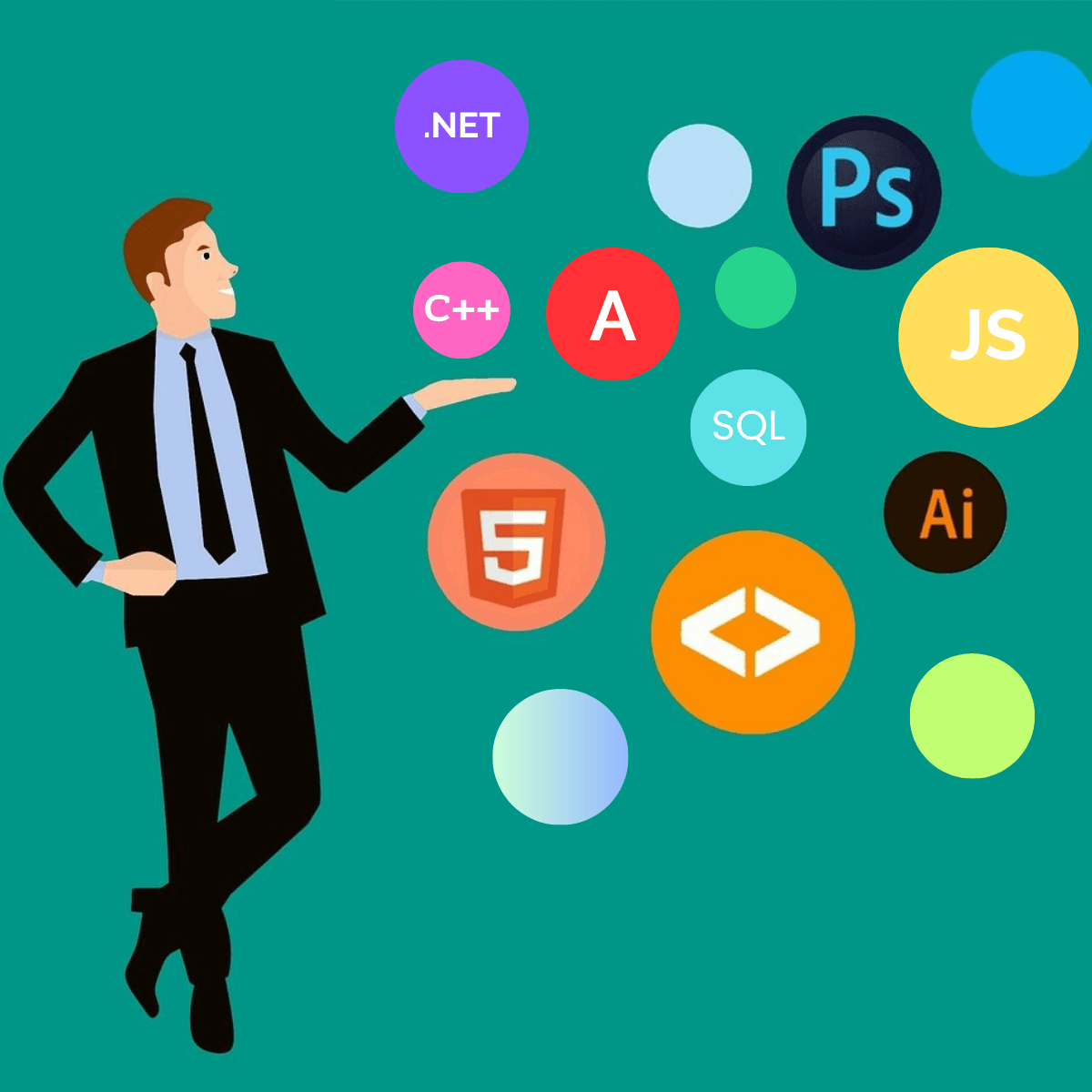
Programming languages can be divided into different categories based on their characteristics and intended use. Here are some common categorizations:
High-Level vs. Low-Level Languages:
- High-Level Languages: designed to be more human-readable and abstracted from low-level details.
Examples: Python, Java, Ruby, and JavaScript.
- Low-Level Languages: they are closer to machine code and provide more control over hardware resources.
Examples: Assembly language and languages like C and C++.
General-Purpose vs. Domain-Specific Languages:
- General-Purpose Languages: designed to be versatile and applicable to a wide range of tasks.
Examples: Python, Java, C++, and JavaScript.
- Domain-Specific Languages (DSLs): tailored to specific domains or industries, offering specialized features and syntax.
Examples: SQL for database management, MATLAB for numerical computing, and HTML/CSS for web development.
Procedural vs. Object-Oriented vs. Functional Languages:
- Procedural Languages: they follow a procedural programming paradigm, where programs are composed of a series of instructions.
Examples: C, Pascal, and Fortran.
- Object-Oriented Languages: support the object-oriented programming (OOP) paradigm, focusing on objects that encapsulate data and behavior.
Examples: Java, C++, and Python.
- Functional Languages: emphasize functional programming, where programs are built around the evaluation of mathematical functions.
Examples: Haskell, Lisp, and Erlang.
Compiled vs. Interpreted Languages:
- Compiled Languages: these languages are translated into machine code before execution. The resulting executable file is directly executed by the computer.
Examples: C, C++, and Go.
-
Interpreted Languages: executed by an interpreter line by line at runtime.
-
Examples: Python, Ruby, and JavaScript.
Scripting Languages:
These languages are primarily used for scripting or automation tasks. They typically have simpler syntax and are often interpreted.
Examples: Python, Perl, and Bash.
Talk to an expert. Get answers to your questions and discover how Vratislavia Software can help you transform your enterprise with modern digital solutions.
Popular Programming Languages for Business
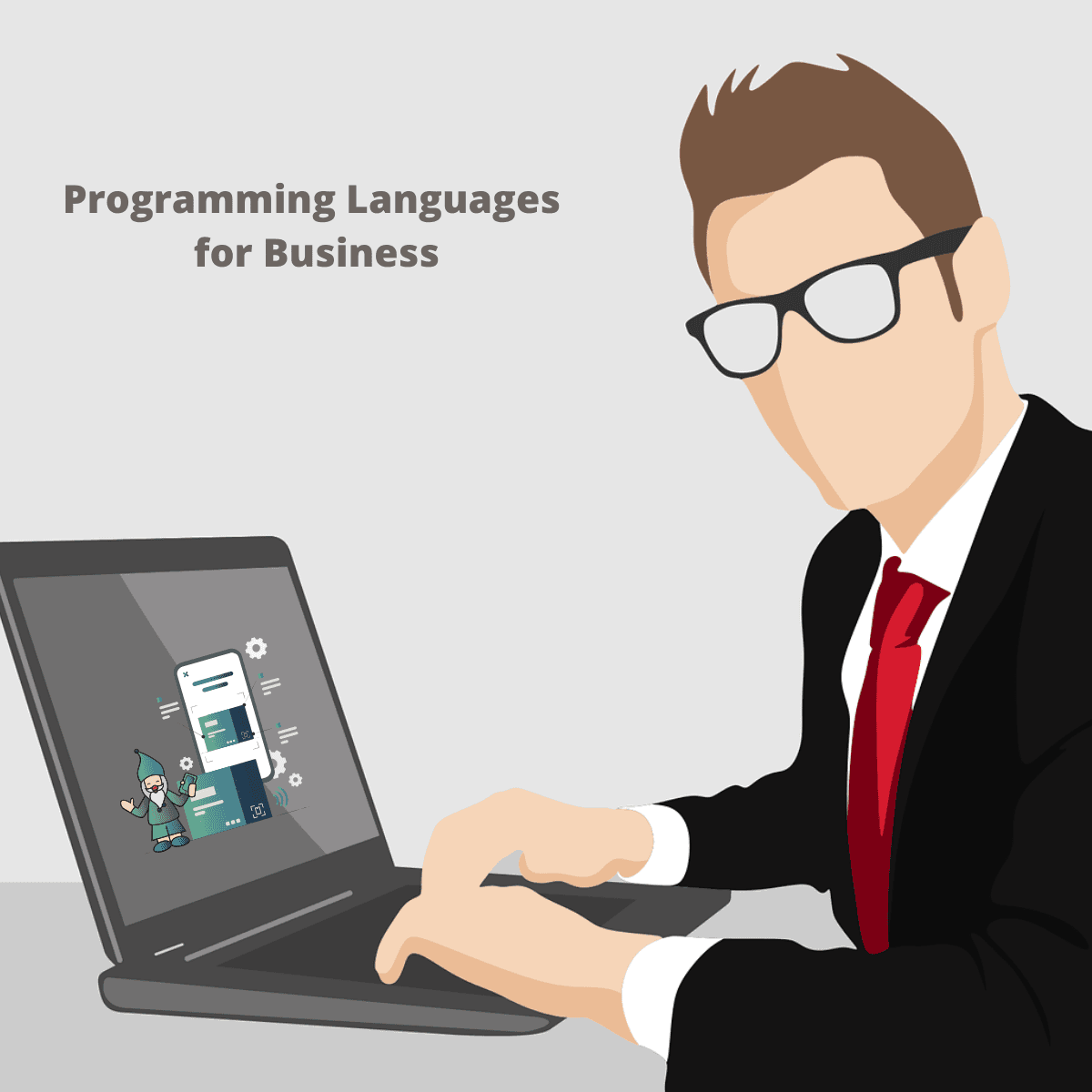
These are just a few examples of programming languages commonly used in the business world. The choice of language depends on factors such as project requirements, existing infrastructure, developer expertise, and the specific needs of the business. Here are the most popular programming languages:
JAVA
Java is a high-level, object-oriented programming language developed by Sun Microsystems in the mid-1990s. It was designed to be platform-independent, allowing developers to write code once and run it on any operating system or device that has a Java Virtual Machine (JVM) installed. It is a widely used programming language known for its robustness, portability, and scalability.
Features and strengths
Object-Oriented: Java is an object-oriented programming language, allowing for modular and reusable code through the use of classes and objects. This enables better organization, encapsulation, and maintenance of code.
Platform Independence: Java programs can run on any platform with a Java Virtual Machine (JVM), making it highly portable. The "write once, run anywhere" principle allows Java applications to be developed on one platform and executed on another without requiring recompilation.
Memory Management: Java has automatic memory management through a garbage collector. Developers do not have to manually manage memory allocation and deallocation, reducing the chances of memory leaks and other memory-related errors.
Strong Standard Library: Java comes with a comprehensive standard library that provides a wide range of built-in classes and APIs. This library includes features for networking, I/O, GUI programming, database connectivity, multithreading, and more, saving developers time and effort.
Exception Handling: Java has robust exception handling mechanisms that allow for graceful error handling and recovery. This promotes more reliable and fault-tolerant software.
Multithreading: Java supports multithreading, enabling concurrent execution of tasks. This is particularly useful for applications that require parallel processing, responsiveness, and efficient utilization of system resources.
Common use cases
Enterprise Software: Java's robustness and scalability make it an ideal choice for developing large-scale enterprise applications, such as customer relationship management (CRM) systems, supply chain management systems, and financial software.
Web Development: Java provides frameworks like Spring and JavaServer Faces (JSF) for building robust and secure web applications. It is commonly used for developing server-side components, managing databases, and handling business logic.
Android Development: Java is the primary language for developing Android applications. It provides a rich set of libraries and APIs through the Android SDK, allowing developers to create feature-rich and performant mobile applications.
Scientific and Data Analysis: Java is used for scientific computing and data analysis, especially when combined with libraries like Apache Spark and Apache Hadoop. It is well-suited for processing large datasets, performing statistical analysis, and implementing machine learning algorithms.
Desktop Applications: Java's cross-platform capabilities make it suitable for developing desktop applications. The JavaFX framework allows developers to create visually appealing and interactive desktop interfaces.
Internet of Things (IoT): Java's lightweight edition, Java ME (Micro Edition), is used for developing applications for embedded systems and IoT devices. It provides a small footprint and efficient resource utilization for devices with limited processing power and memory.
JavaScript
JavaScript is a high-level, interpreted programming language primarily used for web development. It was created by Brendan Eich at Netscape Communications in 1995 and has made its way to the top of the most widespread programming languages.
JavaScript is primarily known for its ability to add interactivity and dynamic behavior to websites. It is executed on the client-side and allows developers to manipulate web page elements, respond to user actions, and update content without requiring a page reload.
Features and strengths
Client-Side Scripting: JavaScript is primarily used for client-side scripting in web browsers. It allows developers to add interactivity and dynamic behavior to websites, enabling features such as form validation, image sliders, interactive maps, and real-time updates.
Easy to Learn: JavaScript has a relatively simple syntax and is easy to pick up for beginners. Its syntax is similar to other popular programming languages, making it accessible to a wide range of developers.
Interactivity and Event Handling: JavaScript provides robust support for handling events and user interactions on web pages. It can respond to user actions like button clicks, form submissions, and mouse movements, enhancing the interactivity and responsiveness of web applications.
Large Ecosystem: JavaScript has a vast ecosystem of libraries, frameworks, and tools that simplify and accelerate web development. Popular libraries like jQuery, React, Vue.js, and frameworks like Node.js and Express.js provide developers with powerful tools for building complex applications.
Asynchronous Programming: JavaScript supports asynchronous programming through features like callbacks, promises, and async/await. This enables the creation of responsive and efficient web applications that can handle multiple tasks simultaneously.
Integration with HTML and CSS: JavaScript seamlessly integrates with HTML and CSS, allowing developers to manipulate web page elements, modify styles, and dynamically update content based on user actions or changing data.
Common use cases
Web Development: JavaScript is a core component of modern web development. It is used to enhance the functionality and interactivity of websites, create dynamic user interfaces, handle client-side data validation and form submissions.
Single-Page Applications (SPAs): JavaScript, combined with frameworks like React, Angular, or Vue.js, is widely used to build single-page applications. SPAs offer a seamless user experience by dynamically updating content without full page reloads.
Mobile App Development: JavaScript frameworks like React Native and Ionic enable developers to build cross-platform mobile applications using a single codebase. This approach allows for code reuse and accelerated development for iOS and Android platforms.
SQL
SQL (Structured Query Language) is a standard programming language used for managing and manipulating relational databases. It provides a set of commands and operations for storing, retrieving, modifying, and deleting data in a database management system (DBMS).
Features and strengths
Data Manipulation: SQL provides a comprehensive set of commands for querying and manipulating data in a database. It allows you to retrieve specific data subsets using SELECT statements, update existing data with UPDATE statements, insert new data with INSERT statements, and delete data with DELETE statements.
Database Management: This language includes commands for creating, altering, and managing database structures, such as tables, views, indexes, and constraints. It enables efficient and organized data storage, retrieval, and maintenance.
Data Integrity: SQL supports enforcing data integrity through constraints like primary keys, unique keys, foreign keys, and check constraints. These ensure data consistency, accuracy, and reliability.
Data Aggregation and Analysis: SQL is used for the development of powerful functions like SUM, AVG, COUNT, MIN, and MAX, enabling efficient data aggregation and analysis. It allows you to generate reports, perform statistical calculations, and derive meaningful insights from large datasets.
Join Operations: SQL allows you to combine data from multiple tables using JOIN operations, such as INNER JOIN, LEFT JOIN, and RIGHT JOIN. This feature enables you to establish relationships between tables and retrieve related data in a single query.
Transaction Control: SQL supports transaction management, allowing you to group a set of operations into a single transaction. This ensures data consistency and integrity by enforcing ACID properties (Atomicity, Consistency, Isolation, Durability).
Common use cases
Database Management: SQL is widely used for creating, managing, and maintaining relational databases. It enables efficient storage and retrieval of data, ensuring data integrity and security.
Data Analysis and Reporting: SQL is essential for performing complex queries and aggregating data for analytical purposes. It is commonly used for generating reports, producing business intelligence insights, and conducting data mining tasks.
Web Development: SQL is integrated with web development frameworks and platforms, such as PHP, Ruby on Rails, and ASP.NET. It allows developers to interact with databases and retrieve or store data dynamically for web applications.
Business Applications: SQL plays a crucial role in various business applications, including customer relationship management (CRM) systems, inventory management systems, financial systems, and human resource management systems.
Data Integration: SQL is used for data integration tasks, such as ETL (Extract, Transform, Load) processes. It enables seamless data extraction, transformation, and loading between different systems, databases, or data sources.
Database Administration: SQL is utilized by database administrators (DBAs) for tasks like database creation, user management, performance optimization, and backup and recovery operations.
Python
Python is a general-purpose programming language which above all emphasizes code readability. Python is a high level, interpreted and dynamically typed language and it supports structured and object-oriented programming. It is one of the easiest programming languages to learn and the most intuitive.
Features and strengths
Easy-to-Read Syntax: Python is friendly for developers and allows fast software development because its code is easy to understand and write. It has a simple syntax with a readable code; therefore, it is easy to comprehend even for a novice. Python allows effortless maintenance and system update.
Large Standard Library: Python is extremely practical for data science projects. Thanks to the comprehensive standard library, it proves to be one of the most versatile programming languages and it provides ready-to-use modules for various tasks, including file I/O, networking, web development, and data manipulation. Python gives opportunity for complex data processing, and therefore it is applicable in many industries which require complicated data analysis.
Extensive Third-Party Libraries: Python has a rich ecosystem of third-party libraries and frameworks. Notably, libraries such as NumPy, Pandas, Matplotlib, and TensorFlow make Python a powerful language for scientific computing, data analysis, machine learning, and artificial intelligence.
Cross-Platform Compatibility: Python code can run on different platforms and operating systems, including Windows, macOS, Linux, and more. This portability allows developers to create applications that work seamlessly across different environments.
Dynamic Typing: Python is dynamically typed, meaning you do not need to explicitly declare variable types. This flexibility simplifies code writing and promotes rapid prototyping and development.
Integration Capabilities: Python easily integrates with other languages, enabling developers to combine Python code with modules written in languages like C, C++, and Java. This capability allows for performance optimization and leveraging existing codebases.
Common use cases
Web Development: Python is widely used for web development, both on the server-side and for scripting tasks. Frameworks like Django and Flask provide powerful tools for building scalable web applications and APIs.
Data Analysis and Scientific Computing: Python, along with libraries like NumPy and Pandas, is extensively used for data analysis, scientific computing, and numerical computations. It is popular in fields such as data science, machine learning, and research.
Automation and Scripting: Python's simplicity and readability make it an excellent choice for automating repetitive tasks and writing scripts. It is commonly used for system administration, scripting, and task scheduling.
Machine Learning and AI: Python's extensive libraries, including scikit-learn, TensorFlow, Keras, and PyTorch, make it a top choice for machine learning and artificial intelligence projects. Its simplicity and robust ecosystem enable developers to create sophisticated models and implement complex algorithms.
Prototyping and Rapid Development: Python's ease of use and quick development cycle make it ideal for prototyping new ideas and building proof-of-concept applications. Its readability and expressive syntax accelerate development speed.
Education and Learning: Python's beginner-friendly nature, vast community support, and extensive learning resources make it a popular choice for teaching programming and introducing newcomers to coding.
C++
C++ is a powerful, general-purpose programming language that was developed as an extension of the C programming language. It was created by Bjarne Stroustrup in the early 1980s and has since become one of the most widely used languages for system programming, game development, and other performance-critical applications.
Features and strengths
Efficiency and Performance: C++ allows low-level memory manipulation and direct access to hardware, making it suitable for developing performance-critical applications like game engines, embedded systems, and operating systems.
Object-Oriented Programming (OOP): This language supports the principles of OOP, such as encapsulation, inheritance, and polymorphism. It allows for the creation of reusable and modular code, promoting code organization and maintenance.
Standard Template Library (STL): C++ provides a powerful STL that offers a collection of generic algorithms and data structures. The STL includes containers like vectors, lists, and maps, as well as algorithms for sorting, searching, and manipulating data efficiently.
Compatibility with C: C++ is backward-compatible with C, allowing developers to leverage existing C code and libraries. It allows for the integration of C code into C++ projects, making it easier to migrate and reuse legacy code.
Memory Management Control: C++ gives developers precise control over memory management. It supports both manual memory management using raw pointers and dynamic memory allocation using the 'new' and 'delete' keywords, as well as smart pointers and RAII (Resource Acquisition Is Initialization) techniques.
High-Level Abstractions: C++ offers high-level abstractions while maintaining low-level control. It provides features like operator overloading, templates, exceptions handling, and generic programming, enabling code reuse and expressive programming.
Common use cases
System Programming: C++ is widely used for system-level programming tasks, such as developing operating systems, device drivers, network protocols, and embedded systems. Its efficiency and low-level control make it suitable for these applications.
Performance-Critical Applications: C++ is used in applications that require high performance and efficient memory management, such as scientific simulations, real-time data processing, financial systems, and computer vision algorithms.
Libraries and Frameworks: C++ is often utilized for building libraries and frameworks that are used across different programming languages.
High-Frequency Trading: C++ is favored in high-frequency trading systems due to its low-level control, performance, and ability to handle large volumes of data with minimal latency.
Cross-Platform Development: C++ can be used for cross-platform development, enabling developers to write code that can run on multiple operating systems with minimal changes.
C#
C# is a modern, general-purpose programming language developed by Microsoft. It was introduced in 2000 as part of the Microsoft .NET framework and has since become a popular choice for developing various types of applications, including desktop, web, mobile, and game development.
Features and strengths
Object-Oriented Programming (OOP): C# is a powerful object-oriented language that supports concepts like classes, objects, inheritance, and polymorphism. It provides a structured and modular approach to software development, promoting code organization and reusability.
Cross-Platform Development: With the introduction of .NET Core, C# has become a cross-platform language. Developers can build applications that run on various operating systems, including Windows, macOS, and Linux. This allows for the development of versatile and platform-independent applications.
Integration with .NET Framework: C# is closely tied to the .NET framework, which provides a vast library ecosystem. This extensive library support simplifies common programming tasks and accelerates development time. The .NET framework includes libraries for networking, file I/O, database access, and more.
Memory Management: This language utilizes automatic memory management through a garbage collector. This feature eliminates the need for manual memory management, making the language more developer-friendly and reducing the risk of memory-related errors.
Language Interoperability: C# is designed to interoperate with other languages that target the .NET framework, such as Visual Basic .NET (VB.NET) and F#. This interoperability enables developers to leverage existing codebases, reuse libraries, and mix different languages within a project.
Modern Language Features: C# incorporates modern language features, such as lambda expressions, LINQ (Language Integrated Query), async/await for asynchronous programming, and pattern matching. These features enhance code expressiveness, readability, and developer productivity.
Common use cases
Windows Desktop Application Development: C# is widely used for developing Windows desktop applications using frameworks like Windows Forms (WinForms) or Windows Presentation Foundation (WPF). These frameworks provide a rich set of graphical components and tools for building user interfaces.
Web Development: C# can be used for web development using frameworks like ASP.NET. With ASP.NET, developers can build dynamic web applications, APIs, and web services. C# offers a robust server-side language for handling server logic and interacting with databases.
Enterprise Software Development: C# is well-suited for building enterprise-grade applications. Its strong typing, extensive library support, and scalability make it ideal for creating robust and secure software solutions for businesses.
Mobile App Development: C# can be used for developing mobile applications using frameworks like Xamarin. Xamarin allows developers to write C# code that can be shared across different mobile platforms, such as Android and iOS.
Data Analysis and Machine Learning: C# is gaining popularity in the data science and machine learning domains. Libraries like ML.NET provide tools for data analysis, machine learning model creation, and deployment using C#.
Ruby on Rails
Ruby on Rails, often simply referred to as Rails, is an open-source web application framework written in the Ruby programming language. It was created by David Heinemeier Hansson and released in 2004. Ruby on Rails follows the Model-View-Controller (MVC) architectural pattern, which promotes modular and organized development.
Features and strengths
Convention over Configuration: It provides a set of sensible defaults and conventions, reducing the need for extensive configuration. This promotes rapid development by eliminating repetitive coding tasks and enabling developers to focus on business logic.
MVC Architecture: Ruby on Rails implements the Model-View-Controller (MVC) architectural pattern. This separation of concerns allows for clean code organization and promotes the reusability of components. The MVC structure simplifies development, maintenance, and testing of web applications.
ActiveRecord: It is an object-relational mapping (ORM) framework. ActiveRecord simplifies database operations by mapping database tables to Ruby objects. It provides a high-level and intuitive interface for querying and manipulating data, reducing the need for writing raw SQL queries.
Rapid Prototyping and Development: Ruby on Rails emphasizes developer productivity and quick iteration. Its clean and readable syntax, along with the extensive set of built-in libraries and tools, enables rapid prototyping and development of web applications. The framework's emphasis on convention also reduces decision-making overhead and speeds up development time.
Developer-Friendly: Ruby on Rails is known for its developer-friendly ecosystem. The Ruby language itself is designed to prioritize developer happiness and readability. Rails community and documentation are robust, making it easier for developers to find resources, share knowledge, and get support.
Testing Frameworks: Ruby on Rails places a strong emphasis on testing. It provides built-in testing frameworks like Test::Unit and RSpec, which make it easier to write automated tests for different parts of the application. This promotes code quality, maintainability, and facilitates the practice of test-driven development (TDD).
Common use cases
Web Application Development: This programming language is primarily used for building web applications of various sizes and complexities. It is suitable for developing content management systems (CMS), social networking platforms, e-commerce sites, and other types of dynamic web applications.
Rapid Prototyping: Due to its convention-driven nature and productivity-focused features, Ruby on Rails is well-suited for rapid prototyping and proof-of-concept development. It allows developers to quickly build functional prototypes to validate ideas and gather user feedback.
Startups and Entrepreneurship: Ruby on Rails gained popularity in the startup community due to its ability to speed up development time and focus on business logic. It is popular among startups as the foundation for their web applications.
API Development: Ruby on Rails can be used to build APIs (Application Programming Interfaces) to provide data and functionality to other applications. It supports the development of RESTful APIs, making it suitable for building back-end services for mobile applications, single-page applications, and integrations with external systems.
Content Management Systems (CMS): Ruby on Rails can be used to develop CMS platforms, enabling easy content management, user administration, and extensibility. Popular CMS platforms like Radiant and RefineryCMS are built on Ruby on Rails.
PHP
PHP (Hypertext Preprocessor) is a popular server-side scripting language designed for web development. It was originally created by Rasmus Lerdorf in 1994 and has since become one of the most widely used programming languages for building dynamic websites and web applications.
Features and strengths
Simplicity and Ease of Use: PHP is a programming language which is known for its simplicity and ease of use, making it a beginner-friendly language for web development. Its syntax is similar to C and other popular programming languages, making it relatively easy to learn and understand.
Cross-Platform Compatibility: PHP is a cross-platform language, which means it can run on various operating systems, including Windows, macOS, Linux, and Unix. This allows developers to build web applications that can be deployed on different platforms without significant modifications.
Embedded HTML Support: This language can be embedded directly into HTML, allowing developers to mix PHP code with HTML markup. This feature makes it convenient for generating dynamic content and integrating server-side logic seamlessly within web pages.
Extensive Frameworks and Libraries: PHP has a vast ecosystem of frameworks and libraries that provide ready-to-use components and functionality for web development. Popular frameworks like Laravel, Symfony, and CodeIgniter offer a structured and efficient way to build scalable web applications.
Database Integration: This programming language has strong integration capabilities with various databases, including MySQL, PostgreSQL, Oracle, and MongoDB. It provides built-in functions and libraries to interact with databases, allowing developers to easily perform database operations and build data-driven web applications.
Large Community and Support: PHP has a large and active community of developers worldwide. This means there are abundant online resources, tutorials, and forums available for support and collaboration. The extensive community contributes to the growth and improvement of the language through continuous updates and enhancements.
Common use cases
Dynamic Web Applications: PHP is primarily used for developing dynamic websites and web applications that generate content on the fly. It excels in handling form data, processing user input, and interacting with databases to deliver personalized and interactive web experiences.
Content Management Systems (CMS): Many popular CMS platforms, such as WordPress, Joomla, and Drupal, are built using PHP. Its flexibility and ease of integration with databases make it a suitable choice for creating CMS-powered websites.
E-commerce Websites: PHP is widely used for building e-commerce websites and online shopping platforms. Its ability to handle product catalogs, shopping carts, and secure payment gateways makes it a reliable choice for online retail businesses.
Web APIs: PHP can be used to develop APIs (Application Programming Interfaces) to provide data and services to other applications. It allows for the creation of RESTful APIs and integration with external systems, enabling developers to build robust web services.
Web Forms and Data Processing: PHP's form handling capabilities make it a popular choice for building web forms and processing form data. It can validate user input, perform data sanitization, and store or process the submitted data securely.
Web Scraping and Data Extraction: PHP provides features and libraries for web scraping and data extraction from websites. It can be used to fetch and parse HTML content, automate data retrieval tasks, and extract relevant information from websites.
Swift
Swift is an open-source programming language developed by Apple to be used on iOS system. It was introduced in 2014 as a replacement for Objective-C for developing applications on Apple platforms such as iOS, macOS, watchOS, and tvOS. Swift combines features from various programming languages to provide a more concise and expressive syntax while maintaining performance and safety.
Features and strengths
Safety and Security: Swift is designed with safety in mind, offering features like optional types, type inference, and memory management through Automatic Reference Counting (ARC). These features help prevent common programming errors, enhance code reliability, and reduce the risk of crashes and memory leaks.
Modern and Expressive Syntax: Swift features a clean and expressive syntax that is easy to read and write. It incorporates modern language features like type inference, closures, and generics, allowing developers to write concise and maintainable code.
Performance: Swift is built with a focus on performance. It is optimized for efficiency and speed, making it suitable for resource-intensive tasks and high-performance applications. Swift's use of advanced compiler technologies, such as LLVM (Low-Level Virtual Machine), helps generate highly optimized machine code.
Interoperability with Objective-C: Swift is designed to work seamlessly with Objective-C, allowing developers to leverage existing Objective-C libraries and frameworks within Swift projects. This interoperability enables a smooth transition from Objective-C to Swift and provides access to the extensive ecosystem of iOS and macOS development.
Playground for Interactive Development: Swift includes a feature called Playgrounds, which allows developers to experiment, prototype, and interactively test their code in a live environment. Playgrounds provide real-time feedback and visualization, making it an excellent tool for learning and exploring Swift's capabilities.
Growing Community and Support: Swift has gained a significant and active developer community since its introduction. This community provides resources, tutorials, and open-source libraries, contributing to the growth and adoption of Swift as a language.
Common use cases
iOS and macOS App Development: Swift is the primary language for developing applications for Apple's iOS and macOS platforms. It is used to build a wide range of apps, including mobile applications, desktop applications, and utilities. Swift's integration with the iOS and macOS frameworks allows developers to create powerful and feature-rich applications.
Server-Side Development: Swift can also be used for server-side development, enabling the creation of web applications, RESTful APIs, and back-end services. With frameworks like Vapor and Kitura, developers can build scalable and high-performance server-side applications using Swift.
Cross-Platform Development: Swift is increasingly being adopted for cross-platform development. It can be used with frameworks like SwiftUI or Flutter to create applications that run on multiple platforms, including iOS, macOS, Android, and Windows.
Machine Learning and Data Science: Swift has gained traction in the field of machine learning and data science. With libraries like TensorFlow Swift and Core ML, developers can build machine learning models, perform data analysis, and integrate AI capabilities into their applications.
Conclusion
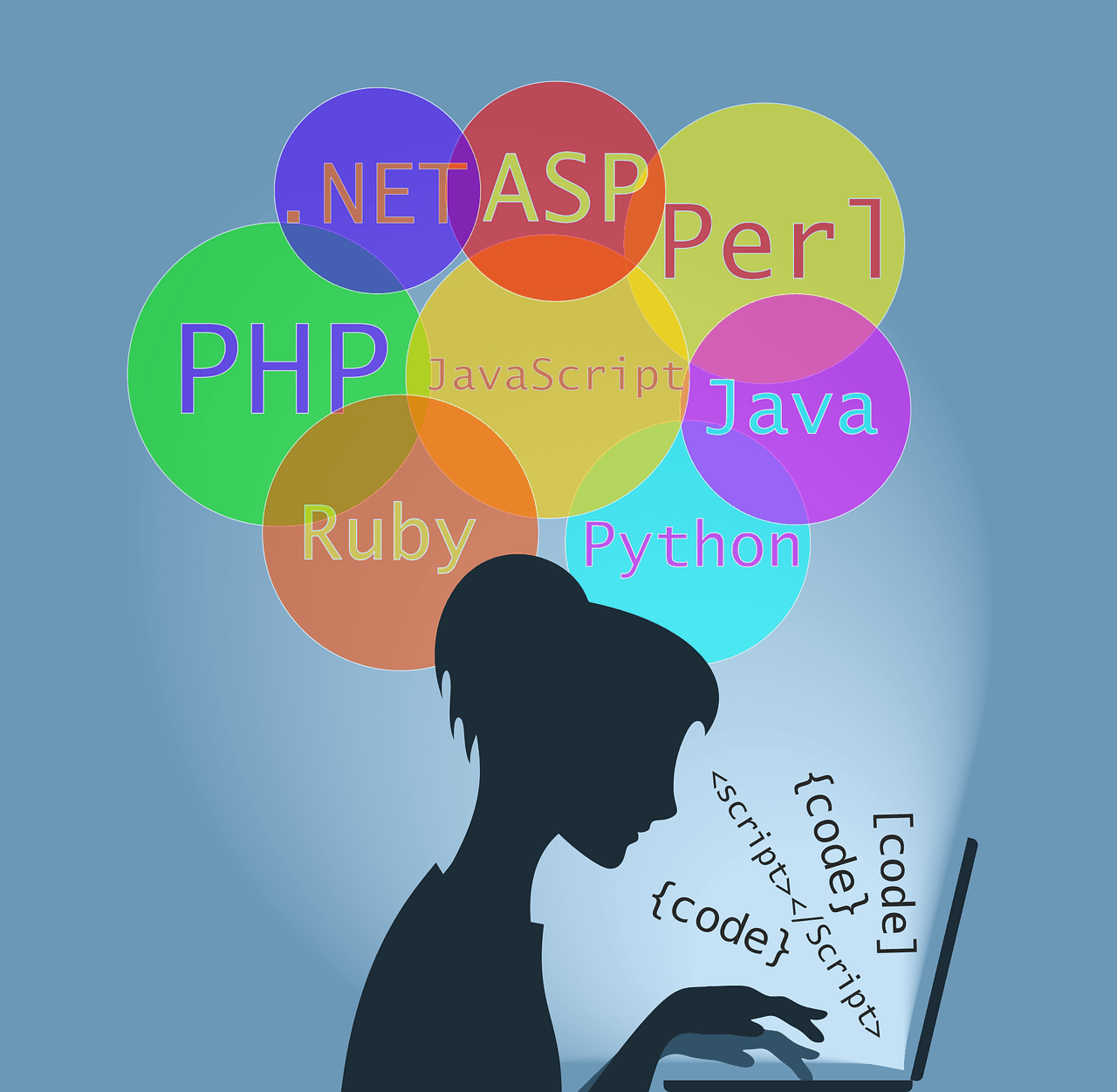
Programming languages exploration is a crucial step towards achieving success in the world of software development and programming. The landscape of programming languages is constantly evolving, with new languages emerging and existing ones evolving to meet the demands of modern technology. By staying up to speed with the industry trends and understanding the strengths and weaknesses of different languages, developers can make informed decisions about which languages to learn and master.
However, navigating the world of programming languages can be overwhelming, especially for businesses and individuals who lack technical knowledge. If you still struggle to find the most suitable technology for your IT project, Vratislavia Software offers IT consulting services during which we will analyze your project requirements and help you choose the best solution for your business. By partnering with our software house, you get an opportunity to work with senior programmers with hands-on experience in software development, who will help you build robust, scalable, and efficient software solutions that meet industry standards and delivers exceptional user experiences.
Contact us and let us be part of your success story.
